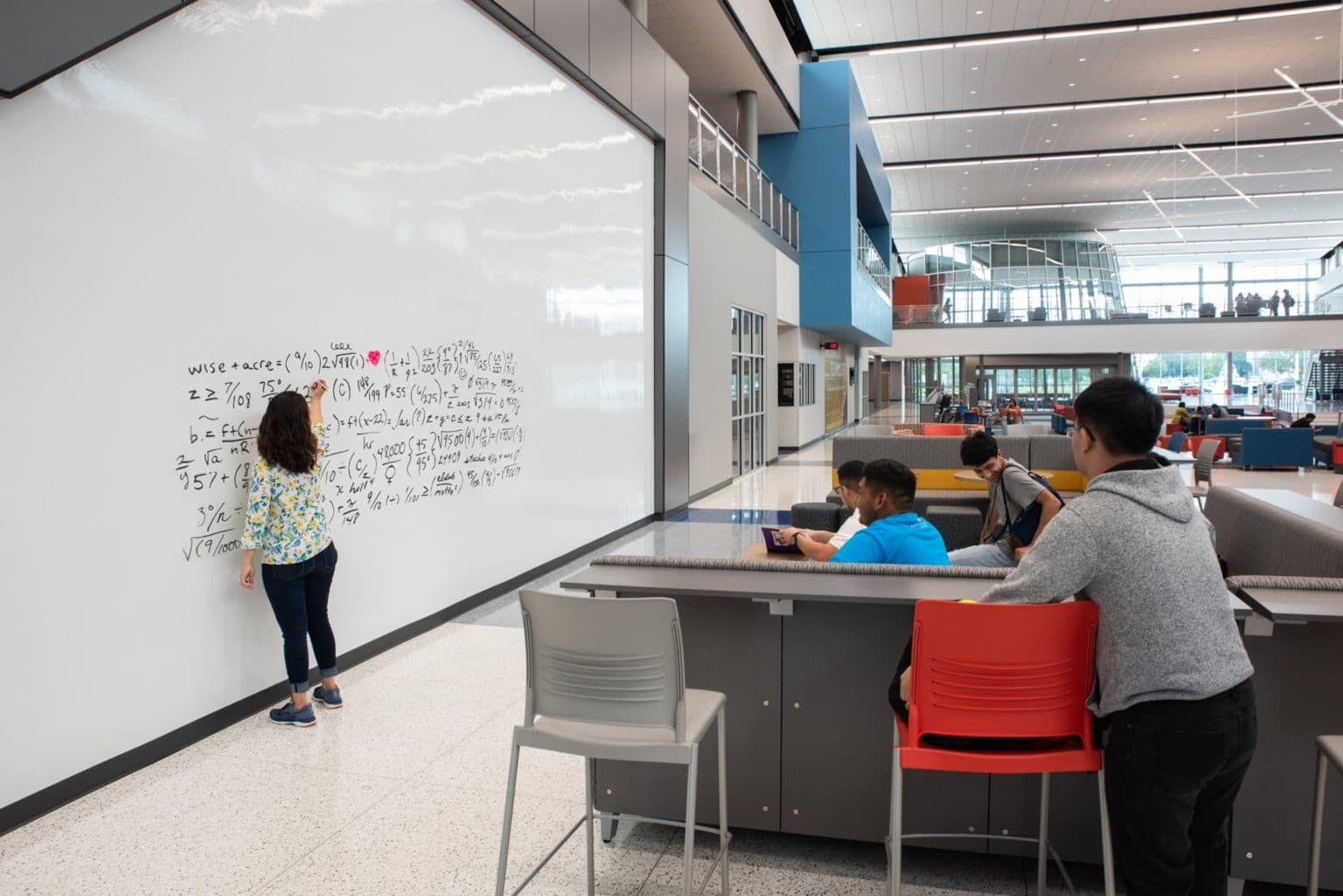“Function reforms form, perpetually.”
Stewart Brand, 1999
Learning is not a linear process; however, the design of learning spaces usually is. This disconnect often leads to miscommunication and flawed design. To put it another way, Don Norman says, “Good design is an act of communication between the designer and the user.” The fundamental problem is that both sides suffer from a communication gap. The language of design is hard to connect to the language of teaching and learning. Even expert teachers often fail to understand the relationship between their built spaces and what they are able to accomplish in class. This often results in a blind leading the blind kind of scenario.
There are a number of strategies that can be employed to try to mitigate this effect. One is to educate the designers and clients, particularly stakeholders on the instructional team. Workshops on how innovative teaching strategies relate to NextGen learning spaces can benefit both the design team and end users. Integrating this into the early stages of your design process can lay the groundwork for smooth planning going forward.
Another strategy is to employ design thinking principles such as those developed by IDEO to create a more iterative and inclusive design process. The IDEO method starts with empathy in which clients are walked through a series of scenarios that envision how they will make use of the spaces being designed. Then the design team goes through an ideation process and develops a set of prototypes designed explicitly to meet those requirements.
The problem with this methodology comes in the subsequent phases where testing of prototypes at any sort of scale may not be possible. There are workarounds for this. First of all, pilot spaces can be set up and then used by the faculty who will ultimately be the users of the new space. Our experience working on Houston Community College’s West Houston Institute indicates that this is highly desirable if you have enough time or can leverage a multi-phase project. However, time is a luxury not afforded to most building projects.
An alternative to new pilots is to see if there are existing teaching and learning innovation experiments occurring at the institution while developing the new space. In a seminal piece called Thinking in Systems, Donella Meadows describes a hierarchy of leverage points, “the higher the leverage point, the more the system will resist changing it.” In other words, questions that challenge core assumptions, especially if they come from outsiders, are likely to be met with resistance from stakeholders. We should not underestimate how much next generation learning spaces can challenge core elements of the way teaching and learning are done at an institution.
One strategy to overcome cultural or systemic resistance to change is to combine IDEO’s elements of empathy with an understanding of Meadow’s systems-thinking theories. If the designer can figure out what parts of the institution are already changing or are driving change, he or she can take advantage of any existing momentum for change and base designs around the needs of those innovators. This will increase the chances that those spaces will be adopted more effectively and willingly. In other words, it is critical to assess the cultural capacity for change before introducing too many innovative concepts into a design or risk those “innovations” falling flat.
Finally, to maximize your chances of success, a follow-on program of professional development is highly recommended. Too often teachers are dropped into unfamiliar classrooms under extreme pressure and asked to teach. This is a recipe for frustration and failure. Under those circumstances, it is not surprising when they revert back to familiar habits and try to reconfigure the classroom back to what they are used to, whether the design affords that or not. Identifying a core group of teachers and giving them targeted professional development, which they can then share with their peers, will significantly improve the uptake of innovative designs.
At the end of the day, any learning space design team has to approach its task in a holistic fashion. It needs to be sensitive to the likely communication issues between end-users, facilities decision-makers, and the design team. Most importantly, the designer needs to accept that learning must take place as part of the design process in order for effective learning to be an outcome of that process.
